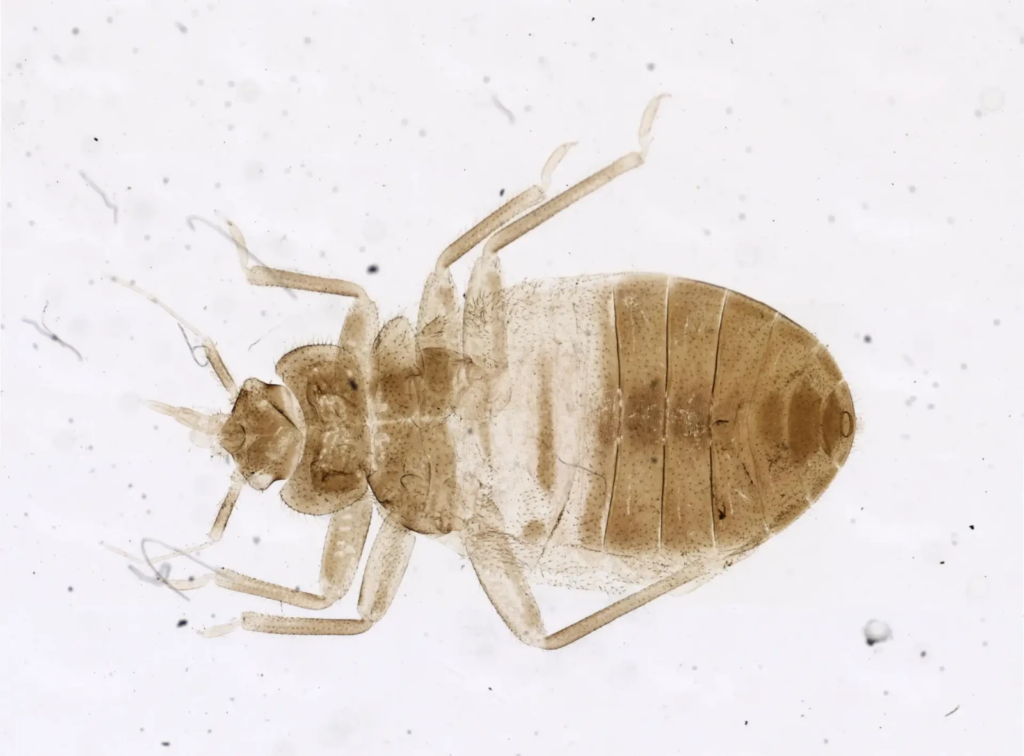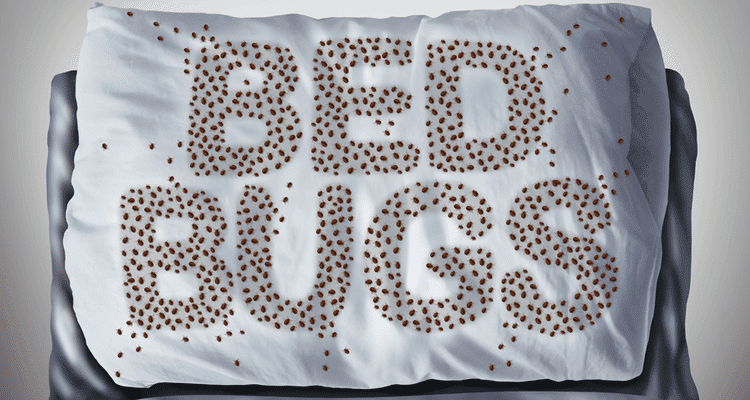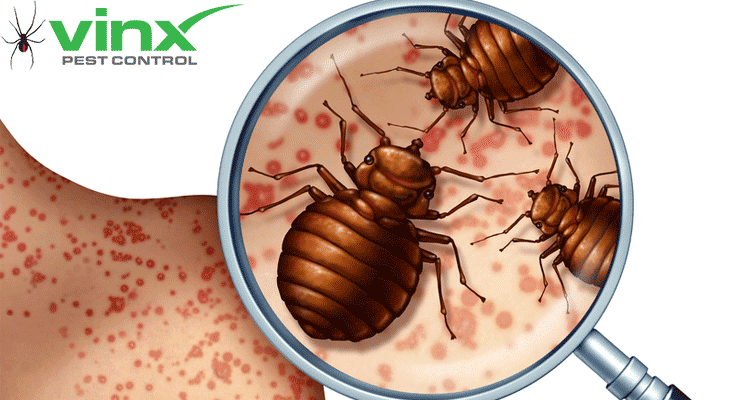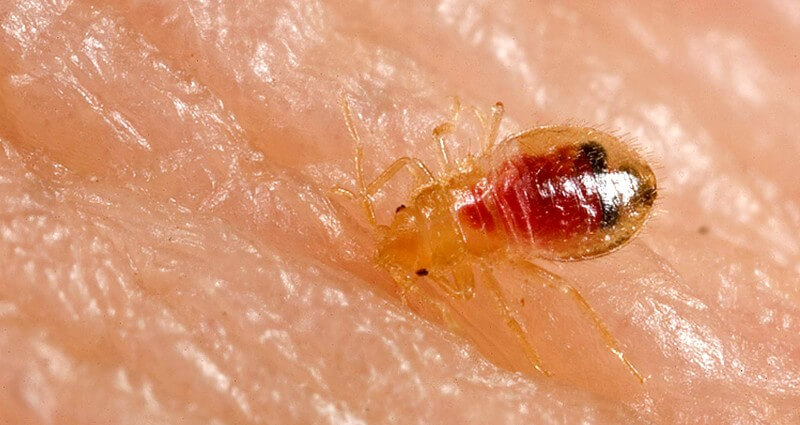Bed bugs have been a persistent pest for thousands of years, feeding on human blood. Although they don’t transmit diseases, their presence can cause discomfort and distress. Effective bed bug extermination is crucial to reclaiming your home and peace of mind.
At Vinx Pest Control, we understand the urgency of bed bug removal. Our team is dedicated to providing comprehensive solutions for residents in Charleston and Columbia. We employ proven methods to ensure that your home is bed bug-free, giving you a safe and comfortable living environment.
If you’re struggling with bed bugs, it’s time to take action. Contact us today for effective bed bug extermination services tailored to your needs.
Key Takeaways
- Bed bugs are a persistent pest that feeds on human blood.
- Effective bed bug removal is essential for a comfortable living environment.
- Vinx Pest Control offers comprehensive bed bug extermination services.
- Our team is dedicated to helping Charleston and Columbia residents.
- Proven methods are used to ensure homes are bed bug-free.
Understanding Bed Bugs: Know Your Enemy
Understanding bed bugs is the first step towards eliminating them from your home. To tackle an infestation effectively, it’s crucial to know the characteristics and behaviors of these pests. Bed bugs are notorious for their ability to hide and their resilience against eradication efforts. By grasping what bed bugs are, how they live, and how they infest homes, we can develop a more effective strategy for getting rid of them.
What Are Bed Bugs?
Bed bugs are small, flat, wingless insects that are reddish-brown in color. They are nocturnal pests that feed on human blood. Adult bed bugs are about 4-5 millimeters long, and their flat shape allows them to hide in tiny crevices and cracks. Bed bugs are not a sign of poor hygiene or poor housekeeping; they can infest even the cleanest and most well-maintained homes.

The Life Cycle of Bed Bugs
The life cycle of bed bugs consists of three stages: egg, nymph, and adult. Female bed bugs lay their eggs in secluded areas, which hatch into nymphs after about 6-10 days. Nymphs go through several molts before reaching adulthood, requiring a blood meal at each stage. Understanding the life cycle is crucial for effective bed bug inspection and treatment, as it helps in identifying all stages of the pest.
Common Causes of Bed Bug Infestations
Bed bug infestations often occur through human activity, such as travel or the introduction of used furniture into the home. They can also spread through adjacent apartments in multi-unit buildings. Preventing bed bug infestations involves vigilance during travel, inspecting second-hand items carefully, and being aware of the signs of bed bugs in your surroundings. Regular bed bug inspection and maintaining a clean environment are key components of bed bug prevention.
Identifying a Bed Bug Infestation
Bed bug infestations can be challenging to detect, but there are several key indicators to look out for. Identifying these signs early is crucial for effective treatment and eradication. We will guide you through the physical signs of bed bugs, the symptoms of their bites, and where to look for them in your home.
Physical Signs of Bed Bugs
One of the most direct ways to confirm a bed bug infestation is by identifying the physical signs. These include live bugs, shed skins, and dark spots or bloodstains on sheets, mattress seams, and other areas where bed bugs are likely to be present. Bed bugs are about 4-5 mm long, flat, and oval-shaped, with a reddish-brown color.

Bite Marks and Symptoms
Bed bug bites can cause a variety of reactions in people, ranging from no reaction at all to severe itching and swelling. Typically, bed bug bites appear as small, red, itchy welts. They often occur in a line or cluster and can be found on exposed skin areas. While the bites themselves are not usually a serious health risk, they can cause discomfort and distress.
Where to Look for Bed Bugs
To detect bed bugs, it’s essential to know where they like to hide. Common hiding places include mattress seams, box springs, bed frames, and headboards. In Charleston homes, look for them in antique furniture and ornate bed frames, while in Columbia properties, check modern upholstered furniture thoroughly. Inspect these areas closely for signs of bed bugs, such as live bugs, eggs, or dark spots.
Common Hiding Places in Charleston Homes
In Charleston, with its historic homes, bed bugs can hide in the intricate details of antique furniture. Check for them in carved wooden headboards and ornate bed frames.
Detecting Bed Bugs in Columbia Properties
In Columbia, where modern homes are more prevalent, bed bugs often hide in upholstered furniture and sleek bed frames. Make sure to inspect these areas thoroughly.
The Dangers of Bed Bug Infestations
Bed bug infestations pose significant risks to our health and well-being, extending beyond mere discomfort. While bed bugs are not vectors of disease, their presence can lead to a range of health issues and psychological distress.
Health Risks Associated with Bed Bugs
The bites of bed bugs can cause allergic reactions, ranging from mild irritation to severe skin reactions. Some people may experience intense itching, swelling, or blistering at the bite site. In rare cases, bed bug bites can trigger anaphylaxis, a severe and potentially life-threatening allergic reaction.
In addition to allergic reactions, the discomfort and stress caused by bed bug infestations can exacerbate existing health conditions, such as anxiety and depression. We must take bed bug infestations seriously and address them promptly to mitigate these health risks.
Psychological Impact of Infestations
The psychological impact of bed bug infestations should not be underestimated. The stress, anxiety, and feelings of shame or embarrassment associated with having bed bugs can significantly affect a person’s mental well-being. Sleep disturbances are common, as individuals may lie awake at night worrying about being bitten.
The emotional toll of a bed bug infestation can be substantial, affecting daily life and overall quality of life. It’s essential to acknowledge these psychological effects and seek support if needed.
Preparing for Bed Bug Treatment
Effective bed bug treatment requires thorough preparation to ensure success. We understand that dealing with a bed bug infestation can be stressful, but with a well-prepared approach, you can increase the chances of completely eliminating these pests from your home.
Creating a Treatment Plan
Creating a treatment plan involves assessing the extent of the infestation and deciding on the most effective treatment methods. We recommend identifying the areas most affected by bed bugs and considering factors like the size of the infestation and any previous treatment attempts. A comprehensive plan will help guide the treatment process, ensuring that all necessary steps are taken to eradicate the bed bugs.

Isolating Infested Areas
Isolating infested areas is a crucial step in preventing the bed bugs from spreading to other parts of your home. We suggest using mattress encasements and sealing off any cracks or crevices around the infested areas. By containing the infestation, you can make the treatment more effective and reduce the risk of bed bugs migrating to other rooms.
Preparing Your Home for Treatment
Preparing your home for treatment involves several key steps, including washing and drying clothing and bedding on high heat, decluttering the infested areas, and removing any items that could interfere with the treatment. We advise you to follow these steps carefully to ensure that the treatment is as effective as possible. By doing so, you’ll be helping to ensure that your home is bed bug-free in the shortest time possible.
How to Get Rid of Bed Bugs: DIY Methods
DIY bed bug control methods offer a range of solutions for homeowners looking to tackle infestations. When dealing with bed bugs, it’s essential to act quickly and effectively to prevent further discomfort and damage. We will explore various DIY techniques that can help eliminate bed bugs from your home.
Heat Treatment Techniques
One effective method for getting rid of bed bugs is using heat treatment. Bed bugs are highly susceptible to high temperatures, making heat a potent tool in their elimination. We can use specialized equipment like portable heaters or dryers to heat-treat infested areas. It’s crucial to ensure that the temperature reaches at least 120°F (49°C) to effectively kill bed bugs and their eggs.
Cold Treatment Options
Cold treatment is another DIY method that can be used to eliminate bed bugs. By exposing infested items to freezing temperatures (below 0°F (-18°C)), we can kill bed bugs. This method is particularly useful for items that can’t be washed or dried, such as certain types of furniture or bulky items. However, it’s essential to note that cold treatment may not be as effective as heat treatment for severe infestations.

Steam Cleaning for Bed Bug Elimination
Steam cleaning is a highly effective DIY method for eliminating bed bugs, especially in areas where they are most likely to be found, such as mattresses and box springs. Using a steam cleaner with a high temperature setting can help kill bed bugs and their eggs on contact. We should be cautious when using steam cleaning to avoid damaging surfaces or pushing bed bugs further into hiding places.
Vacuuming Strategies
Vacuuming is a crucial step in DIY bed bug control. Using a vacuum cleaner with a hose attachment, we can effectively remove bed bugs and their eggs from various surfaces, including carpets, mattresses, and furniture. It’s essential to use a vacuum with a bed bug-proof bag or to seal the vacuum bag in a plastic bag after use to prevent bed bugs from escaping. Regular vacuuming, combined with other DIY methods, can be an effective bed bug solution.
By combining these DIY methods, homeowners can effectively control and eliminate bed bug infestations. While these methods can be effective, it’s also important to consider the severity of the infestation and whether professional assistance may be necessary.
Chemical Treatments for Bed Bug Control
Chemical treatments are a viable option for controlling bed bug infestations when used correctly. Bed bugs are notorious for their resilience, and eliminating them often requires a multi-faceted approach. Chemical treatments can be effective, but it’s crucial to understand the different types available and how to use them safely.
Over-the-Counter Insecticides
Over-the-counter (OTC) insecticides are a common first line of defense against bed bugs. These products are readily available at hardware stores and online. Popular OTC options include pyrethrin-based sprays and permethrin sprays. While these can be effective against bed bugs, it’s essential to follow the label instructions carefully to ensure safety and efficacy.
Natural and Organic Bed Bug Solutions
For those preferring a more natural approach, there are organic and natural bed bug solutions available. These can include diatomaceous earth, essential oils (like lavender and tea tree oil), and other botanical insecticides. While these options are considered safer for humans and pets, their effectiveness can vary, and they may need to be used in conjunction with other methods.

Safety Precautions When Using Chemicals
Regardless of whether you choose OTC or natural chemical treatments, safety should always be your top priority. Always read and follow the label instructions, wear protective clothing, and ensure the area is well-ventilated. It’s also crucial to keep chemicals out of reach of children and pets to avoid accidents.
By understanding the different chemical treatment options and taking necessary safety precautions, you can effectively use these treatments as part of a comprehensive bed bug control strategy.
Non-Chemical Approaches to Bed Bug Removal
For those looking to avoid harsh chemicals, there are several effective non-chemical approaches to bed bug removal. These methods can be used alone or in conjunction with other treatments to ensure a comprehensive elimination strategy.
Diatomaceous Earth and Other Desiccants
Diatomaceous earth is a popular non-chemical desiccant used to control bed bugs. It works by dehydrating the insects, ultimately leading to their death. To use diatomaceous earth effectively, sprinkle it liberally around the edges of the mattress, bed frame, and other areas where bed bugs are present.
Bed Bug Traps and Monitors
Bed bug traps and monitors are another non-chemical tool in the fight against bed bugs. These devices can help detect infestations early and monitor the effectiveness of treatments. Some traps use heat or CO2 to attract bed bugs, while others rely on sticky surfaces to capture them.
Encasements for Mattresses and Box Springs
Using encasements for mattresses and box springs is a simple yet effective method to trap bed bugs inside or prevent them from inhabiting these areas. These encasements are typically made of a breathable material that prevents moisture buildup while keeping bed bugs contained or out.
Limitations of DIY Bed Bug Control
While DIY methods may seem like an effective way to tackle bed bug infestations, they often fall short in completely eliminating the problem. Bed bugs are notorious for their resilience and ability to develop resistance to various treatments, making DIY approaches challenging.
Why DIY Methods Often Fail
DIY bed bug control methods often fail due to incomplete treatment or the use of ineffective products. Bed bugs can hide in tiny crevices and cracks, making it difficult for DIY treatments to reach all areas where they may be present. Furthermore, the use of over-the-counter insecticides can lead to the development of resistance, rendering the treatments ineffective over time.
The Cost of Repeated Treatment Attempts
The cost of repeated DIY treatment attempts can be substantial, both financially and in terms of the stress and frustration caused by the ongoing infestation. Each failed treatment can lead to additional expenses for new products or equipment, and the emotional toll of living with a persistent bed bug problem should not be underestimated. In many cases, the cumulative cost of DIY methods can approach or even exceed the cost of hiring a professional.
Professional Bed Bug Extermination Services
When dealing with bed bugs, turning to professional extermination services is often the most effective solution. Professional pest control services have access to more effective treatments and techniques, making them better equipped to handle severe or persistent infestations.

Benefits of Professional Bed Bug Treatment
Professional bed bug treatment offers several benefits, including the use of advanced equipment and techniques that are not available to the general public. This results in a more thorough and efficient elimination of bed bugs, reducing the risk of reinfestation.
Advanced Treatment Methods Used by Professionals
Professionals utilize a range of advanced treatment methods to combat bed bug infestations. These include:
Heat Remediation Services
Heat remediation involves raising the temperature of an infested area to a level that is lethal to bed bugs. This method is highly effective, especially for severe infestations, as it can penetrate into cracks and crevices that other treatments might miss.
Targeted Chemical Applications
Targeted chemical applications involve the precise use of insecticides to areas where bed bugs are most likely to be found. Professionals are trained to apply these chemicals safely and effectively, minimizing exposure to residents and pets.
What to Expect During Professional Treatment
During professional treatment, you can expect a thorough inspection and preparation process followed by the application of the chosen treatment method. Professionals will work with you to minimize disruption to your daily routine and ensure that the treatment is as effective as possible. If you’re dealing with bed bugs in Charleston or Columbia, consider reaching out to Vinx Pest Control for comprehensive and effective bed bug extermination services.
Why Vinx Pest Control is Charleston and Columbia’s Top Choice
When it comes to bed bug control, Vinx Pest Control stands out as the top choice for residents of Charleston and Columbia. Our reputation is built on a foundation of expertise, customer satisfaction, and a commitment to delivering effective solutions.
Our comprehensive approach to bed bug control begins with a thorough inspection process. This is crucial in identifying the extent of the infestation and determining the most effective treatment plan.
Our Comprehensive Bed Bug Inspection Process
At Vinx Pest Control, our comprehensive bed bug inspection process is designed to identify even the smallest signs of bed bug activity. Our trained technicians use specialized equipment to inspect every nook and cranny, ensuring that no infestation goes undetected.
Customized Treatment Plans for South Carolina Homes
We understand that every home is unique, and that’s why we develop customized treatment plans tailored to the specific needs of our clients. Our team takes into account the severity of the infestation, the type of furniture and decor, and other factors to create a personalized plan that ensures effective bed bug elimination.

Follow-up Services and Guarantees
At Vinx Pest Control, we don’t just stop at treatment. We also offer follow-up services to ensure that the infestation is fully eliminated and provide guarantees to give our clients peace of mind. Our commitment to customer satisfaction is unwavering, and we stand behind our work.
By choosing Vinx Pest Control, residents of Charleston and Columbia can trust that they are getting the best possible service for their bed bug control needs.
Preventing Bed Bug Reinfestation
To keep your home bed bug-free, it’s essential to understand the measures that prevent reinfestation. Preventing bed bug reinfestation involves a combination of regular inspection routines, travel precautions, and protective measures for your home. By being proactive, you can significantly reduce the risk of bed bugs returning.
Regular Inspection Routines
Regular inspections are crucial in detecting early signs of bed bug reinfestation. We recommend checking your home thoroughly, especially after traveling or having guests. Look for signs of bed bugs in mattresses, box springs, and other areas where they are likely to hide. Regular inspections enable you to catch any potential issues before they escalate.
Travel Precautions to Avoid Bringing Bed Bugs Home
Traveling can be a common way for bed bugs to enter your home. To avoid bringing them back, inspect your hotel room thoroughly, checking the mattress, bed frame, and headboard. Keep your luggage off the floor and wash your clothes as soon as you return home. These simple precautions can significantly reduce the risk of bed bug reinfestation.
Preventative Measures for Your Home
Protecting your home from bed bugs involves using mattress encasements, sealing cracks and crevices, and being cautious with second-hand furniture. Using diatomaceous earth or other desiccants can also help deter bed bugs. By taking these preventative measures, you can create a bed bug-free environment.
Special Considerations for Charleston’s Climate
Charleston’s humid climate can make it easier for bed bugs to thrive. Regularly checking for moisture issues and ensuring good ventilation can help prevent bed bug infestations.
Protecting Columbia Properties Year-Round
In Columbia, being vigilant throughout the year is key to preventing bed bug reinfestation. Regular inspections and maintaining a clean, clutter-free home are essential strategies for keeping bed bugs at bay.
Conclusion: Reclaim Your Home from Bed Bugs
Reclaiming your home from bed bugs requires a comprehensive approach, from understanding the nature of these pests to implementing effective removal strategies. Throughout this article, we’ve explored the crucial steps in identifying, treating, and preventing bed bug infestations. By understanding the life cycle of bed bugs, recognizing the signs of infestation, and employing a combination of DIY methods and professional treatments, you can successfully eliminate bed bugs from your home.
If you think you’ve got a bed bug problem at your home or business, chances are you’re not alone. Since bed bugs are frequent travelers, it’s likely your neighborhood may be full of them.
For residents in Charleston and Columbia, Vinx Pest Control offers expert bed bug extermination services. Our team provides comprehensive inspections, customized treatment plans, and follow-up services to ensure that your home is bed bug-free. Don’t let bed bugs disrupt your life; contact Vinx Pest Control today to reclaim your home and enjoy a peaceful night’s sleep. Effective bed bug removal is within reach, and with the right professionals, you can achieve a bed bug conclusion and start reclaiming your home from these unwanted pests.










